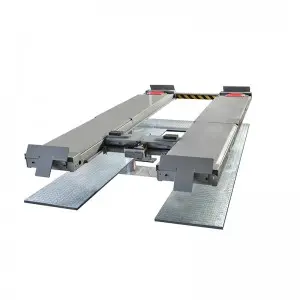In the realm of electrical engineering, the alternating current (AC) series represents a fundamental concept that plays a pivotal role in powering our modern lives. From household appliances to large industrial machinery, the AC series is integral to how we generate, distribute, and utilize electricity. This article endeavors to delve into the intricacies of the AC series, examining its characteristics, applications, and the broader implications for both engineering and daily life.
What is the AC Series?
At its core, the AC series refers to systems of alternating current where the voltage or the current alternates in a sinusoidal manner over time. Unlike direct current (DC), which flows in a singular direction, AC changes direction periodically, typically following a sine wave pattern. This characteristic is not merely a quirk of AC; it’s what allows it to be efficiently transmitted over long distances.
The frequency of AC, measured in hertz (Hz), determines how many times the current changes direction in one second. In many countries, the standard frequency is set at either 50 Hz or 60 Hz. This uniformity is crucial as it ensures compatibility among different electrical systems and appliances.

Understanding the AC Series: Exploring Its Importance in Electrical Engineering and Everyday Applications
Advantages of AC over DC
The AC series introduces several advantages, making it the preferred choice for electricity transmission over vast distances:
1. **Efficiency in Transmission**: Alternating current can be transformed into high voltages, which minimizes energy loss during transmission. High-voltage transmission systems are essential to deliver electricity from power plants to consumers scattered over large areas.
2. **Simplicity of Transformation**: AC can easily be transformed from one voltage level to another using transformers. This property is essential for adapting electricity to the requirements of different home appliances and industrial machines.
3. **Lower Production Costs**: Generating AC is often more cost-effective than generating DC. Most power plants are designed to produce alternating current, leveraging the existing infrastructure and technology.
4. **Versatile Applications**: AC is widely used for a vast range of applications, from powering household appliances to industrial machinery. It also facilitates the use of synchronous motors and other technologies that rely on alternating current.
The AC Series in Everyday Life
In everyday applications, the AC series is predominantly observed in household electricity supply. When you plug an appliance into an outlet, you are utilizing an AC supply. Devices such as refrigerators, air conditioners, and washing machines operate using alternating current, which powers their motors and controls.
Electric lighting is another example of the AC series in daily life. Most lighting systems, particularly incandescent and fluorescent bulbs, are designed to work with AC, taking advantage of its ability to drive lights with efficiency and reliability.
Key Components of the AC Series
To better understand the AC series, it is vital to recognize its various components. These include:
1. **Generating Stations**: These facilities produce AC through various means, including hydroelectric, thermal (coal, natural gas, nuclear), and renewable sources (solar, wind). The generated AC is then stepped up to high voltages for transmission.
2. **Transformers**: Essential in the transmission process, transformers adjust voltage levels to ensure efficient electricity distribution. They allow electricity to be transmitted over long distances at higher voltages and then stepped down for safe usage in homes and businesses.
3. **Transmission Lines**: High-voltage transmission lines carry electricity across vast distances. These lines need stringent insulation and support structures to handle the high voltages and ensure safety.
4. **Distribution Networks**: After reaching substations, voltage is reduced again for distribution through lower-voltage lines to homes and businesses. This is where AC becomes accessible for everyday use.

Understanding the AC Series: Exploring Its Importance in Electrical Engineering and Everyday Applications
Challenges and Future of the AC Series
Despite its advantages, the AC series does face challenges, particularly in the context of integrating renewable energy sources. The variability of power generation from sources like wind and solar can complicate the stability of AC systems, necessitating advancements in smart grid technologies and energy storage solutions.

Understanding the AC Series: Exploring Its Importance in Electrical Engineering and Everyday Applications
In conclusion, the AC series is a cornerstone of modern electrical engineering and daily life. From its efficient transmission capabilities to its ubiquitous presence in homes and industries, understanding the AC series enhances our appreciation of how electricity powers our world. As technology continues to evolve, the evolution of the AC series will undoubtedly play a crucial role in shaping the future of energy consumption and sustainability.Cylinder


